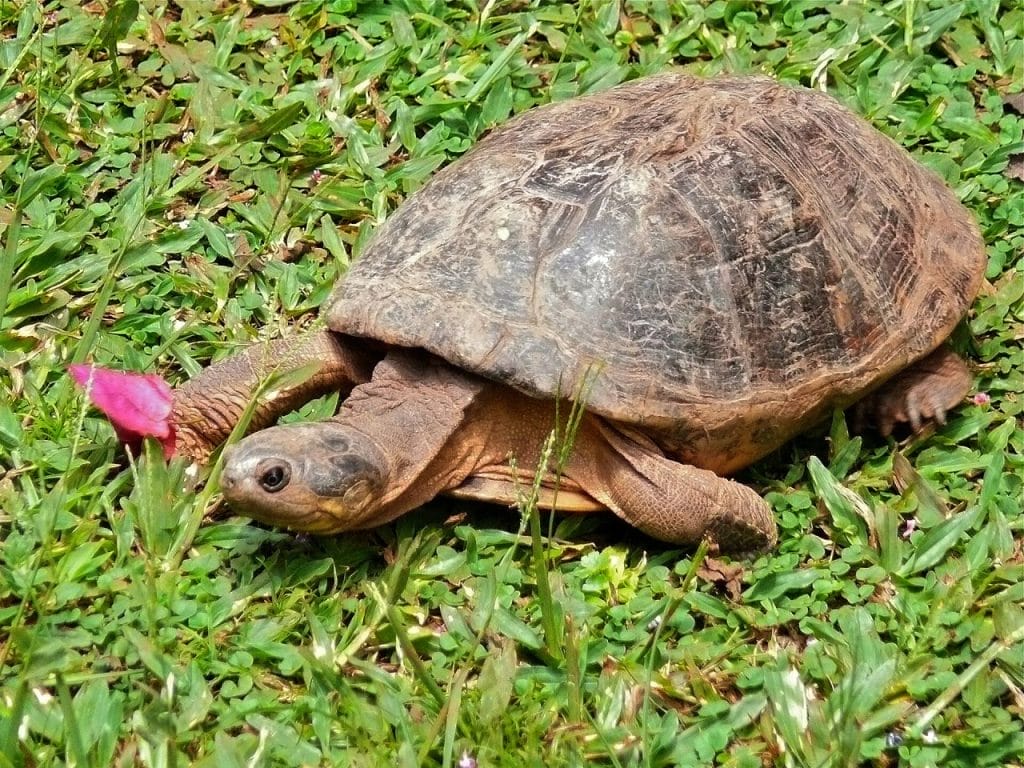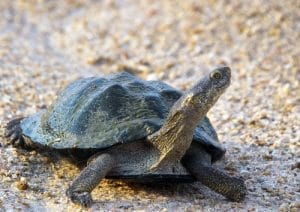Pelomedusa subrufa (East African Helmeted Turtle)
Home > Turtle Database > Pelomedusa subrufa (East African Helmeted Turtle)
Pelomedusa subrufa is a small, semi-aquatic turtle found widely across Africa. It’s known for its helmet-shaped head and ability to survive in both water and dry conditions. This turtle is hardy, adaptable, and often seen in temporary ponds or roadside ditches.
Native To These Regions
Botswana, Democratic Republic of the Congo, Eswatini, Ethiopia, Ghana, Kenya, Malawi, Mozambique, Namibia, Rwanda, Somalia, South Africa, South Sudan, Sudan, Tanzania, Uganda, Zambia, ZimbabweNative Turtle Species Map – Find Turtles by Region
Scientific Classification
Kingdom: Animalia
Phylum: Chordata
Class: Reptilia
Order: Testudines
Family: Pelomedusidae
Genus: Pelomedusa
Species: Pelomedusa subrufa
Common Names
- East African Helmeted Turtle
- African Side-necked Turtle
- Marsh Terrapin
This Hilarious Turtle Book Might Know Your Pet Better Than You Do
Let’s be real—most turtle care guides feel like reading a textbook written by a sleep-deprived zookeeper.
This one’s not that.
Told from the snarky point of view of a grumpy, judgmental turtle, 21 Turtle Truths You’ll Never Read in a Care Guide is packed with sarcasm, sass, and surprisingly useful insights.
And hey—you don’t have to commit to the whole thing just yet.
Grab 2 free truths from the ebook and get a taste of what your turtle really thinks about your setup, your food choices, and that weird plastic palm tree.
It’s funny, it’s honest, and if you’ve ever owned a turtle who glares at you like you’re the problem—you’ll feel seen.
Identification
Description
This turtle has an oval, domed shell that is usually dark brown or olive. Its skin is grayish with a pale underside. It can retract its head sideways under the shell, which is typical of side-necked turtles. The shell grows up to 20 cm (about 8 inches).
Sexual Dimorphism
Females are usually larger than males. Males have longer, thicker tails and more curved claws on the front feet.
Check more turtles from the Pelomedusa genus
Native Origin and Distribution
Geographical Range
It is native to most of Sub-Saharan Africa and parts of the Arabian Peninsula. Countries include Kenya, Tanzania, Uganda, South Africa, Ethiopia, and Yemen.
Preferred Habitat
It lives in slow-moving or still freshwater like ponds, swamps, marshes, and seasonal pools. It can also be found in man-made habitats like ditches and farm reservoirs. It survives dry seasons by burrowing into mud and becoming dormant.
Behavior
Feeding Habits
It is an opportunistic feeder. It eats insects, fish, amphibians, carrion, and even plant matter. It can be aggressive while feeding, especially in groups.
Predators
Young turtles are preyed upon by birds, fish, and mammals. Adults are less vulnerable but can still be hunted by large birds and humans.
Reproduction
Breeding Season
Breeding usually occurs at the start of the rainy season when water bodies refill.
Reproductive Method
It lays eggs in shallow nests dug into soft ground. A clutch can contain 7–25 eggs, and hatching takes 2–4 months depending on temperature.
Conservation
Extinction Status
Listed as Least Concern by the IUCN.
Threats
Threats include habitat destruction, pollution, and collection for the pet trade or food in some areas.
Conservation Measures
It benefits from its wide range and adaptability. Some regions protect its wetland habitats, and its presence in captivity helps raise awareness.
Economic Importance
It is sometimes kept as a pet. In rural areas, it may be used for traditional medicine or as a food source.
Interesting Facts
It can breathe through its throat lining, which helps it stay underwater longer.
It often plays dead when handled, flipping on its back and becoming motionless.
This turtle can travel long distances over land during the rainy season to find new water sources.

About Author
Muntaseer Rahman started keeping pet turtles back in 2013. He also owns the largest Turtle & Tortoise Facebook community in Bangladesh. These days he is mostly active on Facebook.















